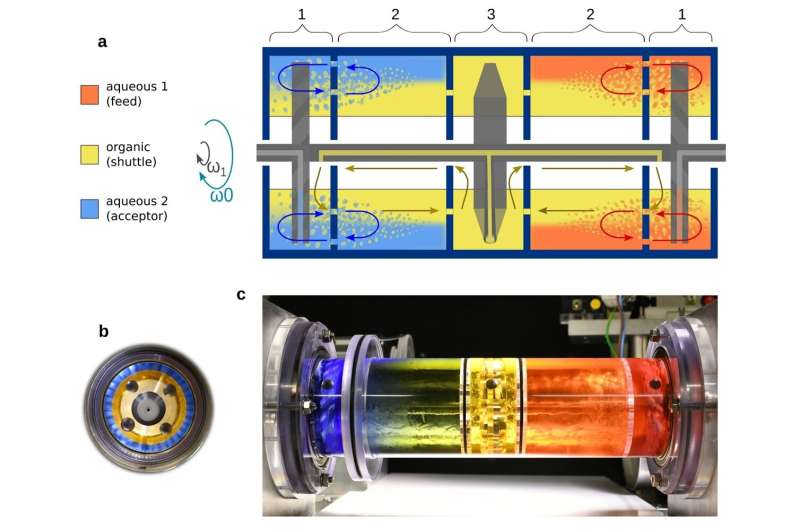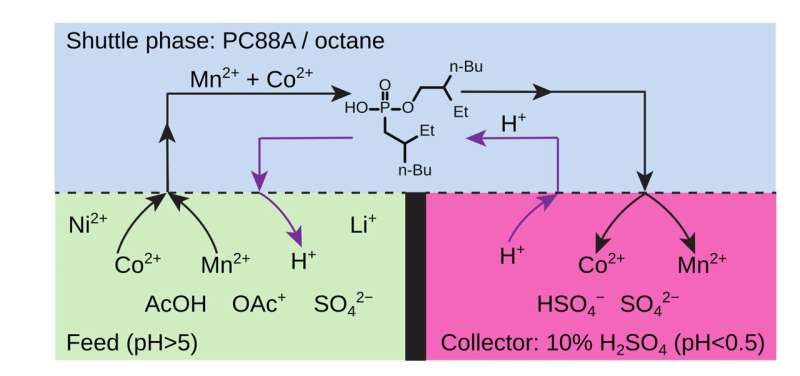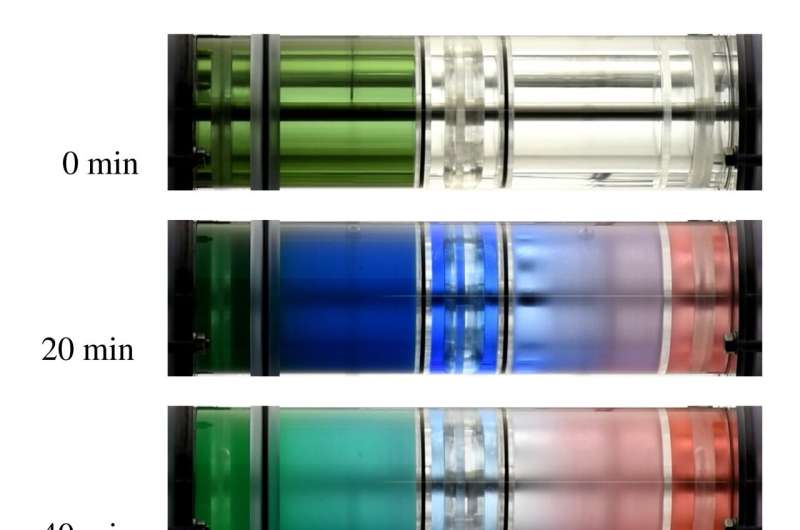Recycling valuable metals from spent lithium ion batteries using spinning reactors

In a world that is slowly distancing itself from carbon-based energy, there has been a meteoric rise in the use of lithium-ion batteries as a next-generation energy storage solution. However, this has resulted in another problem—an increase in the amount of lithium battery waste.
Lithium-ion batteries degrade slowly over their lifetime, losing anywhere from 12% to 24% of their total capacity over 500 charging and discharging cycles. The electrolyte and other materials inside the battery can also degrade, causing a decrease in capacity over time. The disposal of lithium batteries in landfills or incineration can pose environmental and safety concerns due to the potential for toxic elements to leach into the soil and water.
Recycling lithium batteries requires extensive use of hydrometallurgy, a branch of metallurgy involving aqueous solutions. Briefly, the used battery is dismantled and valuable metals are extracted using solvent, followed by stripping where extracted metal is recovered and the solvent is recycled. The current lithium battery recycling requires multiple steps of extraction-stripping processes, each requiring separate reactors and different parameters. This significantly drives up the complexity and cost of recycling, hence the recycling rate of lithium batteries is very low.
There have been numerous attempts to devise a single-step, one-pot solution by partitioning the reactor using membranes. However, these ideas have failed in larger reactors, mostly due to membrane failures, especially under strong stirring.

To address this issue, an interdisciplinary research group led by Professor Bartosz A. Grzybowski at the Center of Soft and Living Matter within the Institute for Basic Science (IBS), South Korea, reported a novel method for recycling valuable metals such as lithium, nickel, and cobalt, from spent lithium-ion batteries.
Gryzbowski’s group has been famous in the field for their spinning concentric liquid reactors, which were proven to be effective in carrying out multi-step reactions in a single chamber. This time, the group successfully applied this concept to simplify the extraction-stripping process for lithium battery recycling. The study is published in the journal Advanced Materials.
The horizontally rotating reactor, which was designed by co-author Dr. Olgierd Cybulski, can process complex metal mixtures in which aqueous feed, organic extractant, and aqueous acceptor phases are all present in the same, rotating vessel. Unlike the one-pot setups that use membranes, this reactor can be vigorously stirred and emulsified without the coalescence of aqueous layers. The arrangement of higher-pH feed, organic extractant (shuttle), and lower-pH acceptor phases is robustly maintained by placing all these liquids in a rotating vessel in a way that they form concentric layers stable enough to allow efficient interfacial mixing, but without coalescing the aqueous layers.
Impressively, this process “can perform the separation of metals in a matter of minutes, using a low concentration of extracting agents and with high selectivity,” according to co-author Dr. Cristóbal Quintana.

This study demonstrates that concentric liquid reactors, and especially their segmented versions, can rapidly separate valuable metals from highly concentrated mixtures using much lower concentrations of extractants than in existing methods and can access unexplored ranges of process parameters.
These aspects, as well as favorable power-to-operate vs. reactor-size scaling, make concentric liquid reactors an interesting alternative to the traditional hydrometallurgical methods and potentially applicable to the separations of other valuable metals. Professor Grzybowski explains, “The technology is also forward-looking in the sense that, as we show, it is tunable to different feed metal compositions and of course, to metals other than those used in batteries.”
More information:
Cristóbal Quintana et al, One‐Pot, Three‐Phase Recycling of Metals from Li‐Ion Batteries in Rotating, Concentric‐Liquid Reactors, Advanced Materials (2023). DOI: 10.1002/adma.202211946
Citation:
Recycling valuable metals from spent lithium ion batteries using spinning reactors (2023, May 2)
retrieved 2 May 2023
from https://techxplore.com/news/2023-05-recycling-valuable-metals-spent-lithium.html
This document is subject to copyright. Apart from any fair dealing for the purpose of private study or research, no
part may be reproduced without the written permission. The content is provided for information purposes only.
For all the latest Technology News Click Here
For the latest news and updates, follow us on Google News.

